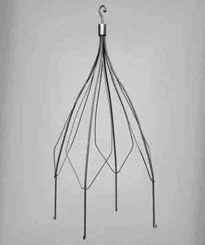HealthManagement, IQ_2012_06_venus
Many Inventions Result from Eureka Moments, but Others Unfold Slowly Over Years of Dedicated Focus. The World’s First Optional Filter was One Such Invention.
IQ Talks to its Inventor, Prof. Rolf Günther, About his Years of Dedication and Research.
“When I started my training, interventional radiology (IR) barely existed. As I completed my training in 1975, the contours of therapeutic interventions were just appearing on the horizon. When I moved to Mainz University in 1972, the atmosphere was very inspiring, since we had great support from radiology, surgery and urology. Mainz Universi ty was well known for its angiographic focus at that time, having played host to Prof. Eberhard Zeitler’s first diagnostic coronary angiography years earlier in the 1960s.
“We began to expand our diagnostic angiography experience, introducing new techniques and applications; new ways of accessing vessels and new ways of collaborating with other colleagues, such as developing per cut aneous renal stone extraction together with our urologists.
“Initially my interest was primarily focused on the kidney and liver, and later on vascular interventions. During my time in Mainz and later on in Aachen, we experienced a fantastic flowering of IR and our highly motivated team made its small contribution by developing some new techniques and several interventional device patents. Almost obsessed by the idea of catheter-based minimally invasive interventions, we worked very hard clinically and experimentally day and night.”
In 1984, Prof. Günther took up the chairmanship of the Department of Diagnostic Radiology at the RWTH Aachen University, a university renowned for its technical innovation.
“For us radiologists, the strength of Aachen was not so much the technologically-driven atmosphere, but the recruitment of a great many highly motivated, innovative and skilled co-workers and the availability of an excellent animal laboratory for our experimental work.
“My activities were primarily clinically oriented, and I drew much inspiration from this. In order to improve research between IR and technical disciplines on a univer sity level, we have recently established a formal longterm co-operation with one of my former consultants, Prof. Thomas Schmitz-Rode, now head of the Institute of Biomedical Technologies at RWTH Aachen University. This offers an interesting IR research infrastructure and long-term perspective for the future.”
Of course, what Prof. Günther is best known for is his innovative tulip filter – a breakthrough which overcame the limitations of previous filter designs.
“The first caval filters in the late 1960s were simply too large. They were initially inserted by venotomy or later percutaneously via a large-calibre 24F sheath. After hav ing observed the development of the percutaneous Simon nitinol and Bird’s nest filters, we were looking for something better. Clinical need prompted us to develop a new “basket filter” in 1980, which primarily was not so success ful because of fatigue fractures. Our research was also de layed by animal-rights activists hijacking the dogs we had placed the filters in. But by 1989, we had refined this basket design as the tulip filter, which was also suitable for retrieval. This was the first optional filter on the market.”
Despite his retirement in 2010, Prof. Günther continues his work in IR, and having spent some months at the Royal Hospital of Muscat, Oman, he is now working with Prof. Bernd Hamm at the Charité University Hospital in Berlin.
With sincere thanks to Prof. Rolf W. Günther.
C.M.
Günther Tulip™ Vena Cava Filter
Permission for use granted by Cook Medical Incorporated,
Bloomington Indiana


